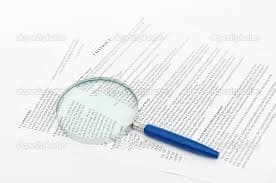Under the new inter partes review (IPR) process, which replaced the old inter partes examination process as of September 16, 2012 under the America Invesnts Act (AIA), the Patent Trial and Appeal Board (PTAB) has been developing new rules to govern the scope of discovery in cases challenging the validity of patents.
Only limited discovery is available regarding prior publications and patents that may invalidate the challenged patent.
PTAB rules regarding discovery are far more specific than federal court discovery rules, given the far shorter time available for discovery. Discovery can drag on for years in federal court but is normally limited to one year with the PTAB.
“Routine discovery” includes discovery of exhibits cited in papers or testimony and “relevant information that is inconsistent with a position advanced by the party during the proceeding.”
Whereas in normal federal cases the standard for discovery is whether the request is “reasonably calculated to lead to the discovery of admissible evidence,” in PTAB proceedings the standard is higher.
In a March, 2013 decision in the case of Garmin v. Cuozzo, the PTAB specified five factors that were important when ruling on a motion for an order authorizing additional discovery:
- More Than A Possibility And Mere Allegation — The mere possibility of finding something useful, and the mere allegation that something useful will be found, are insufficient to demonstrate that he requested discovery is necessary in the interest of justice.
- Litigation Positions and Underlying Basis — Asking for the other party’s litigation positions and the underlying basis for those positions is not necessary in the interest of justice.
- Ability to Generate Equivalent Information By Other Means –- Information a party can reasonably figure out or assemble without a discovery request would not be in the interest of justice to have produced by the other party.
- Easily Understandable Instructions — The questions should be easily understandable. Ten pages of complex instructions for answering questions is prima facie unclear.
- Requests Not Overly Burdensome To Answer — The requests must not be overly burdensome to answer, given the expedited nature of the IPR process.


